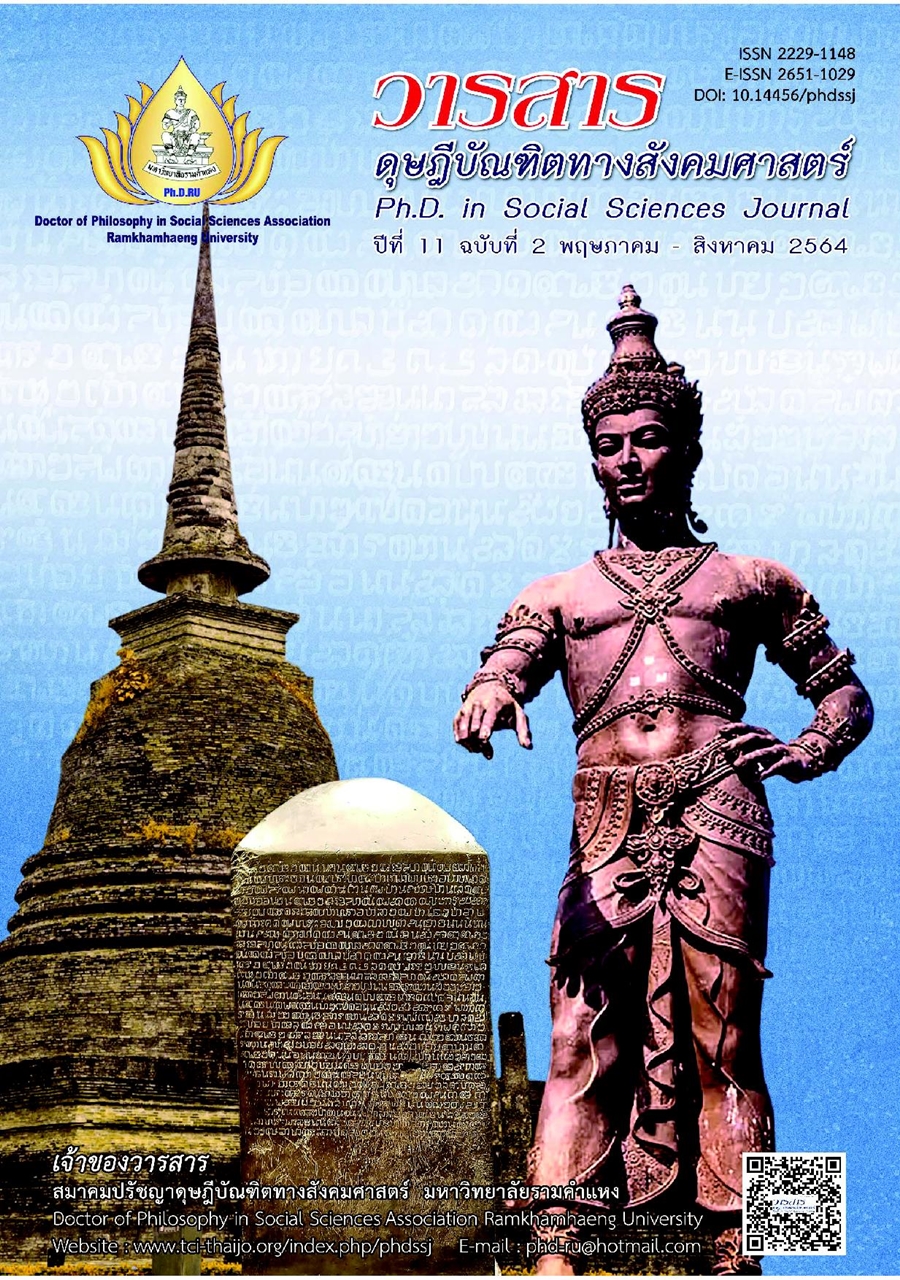Factors Intention to Leave of Physicians of Thai Private Hospitals by Fuzzy Delphi Method
Main Article Content
Abstract
This research aimed to select factors of intention to leave of physicians in Thai private hospitals by using multi-method methodology. The research has been done firstly by documentary research. Data collection was through in-depth-interviewed of key informants consisting of 20 physicians who were experts in private hospital business, and weighted those factors. Then the factors were analyzed by Fuzzy Delphi Method.
The result found that the 15 factors derived from documentary research were lessened down to 3 factors by using Fuzzy Delphi Method namely; (1) organizational fairness (2) self-awareness and (3) management policy.
Article Details
Academic articles, research articles, and book reviews in the Ph.D. in Social Sciences Journal are author’s opinions, and not the publisher’s, and is not the responsibility of the Ph.D. in Social Sciences Journal Philosophy Association, Ramkhamhaeng University. (In the case that research is done on human, the researcher has to be trained in Ethics for Doing Research on Human Training and has to produce the evidence of the training).
References
Ajzen, I., & Fishbein, M. (1980). Understanding attitude and predicting social behavior. Prentice Hall.
Buckley, J. J. (1985). Fuzzy hierarchical analysis. Fuzzy Sets Systems, 17(3), 233-247.
Degen, C., Li, J., & Angerer, P. (2015). Physicians’ intention to leave direct patient care: An integrative review. Human Resource Health, 13, 74-86.
Gaertner, K. N., & Nollen, S. D. (1992). Turnover intentions and desire among executives. Human Relations, 45(5), 447-465.
Good, C. V., Merkel, W. R., & Kappa, P. D. (1973). Dictionary of education. McGraw-Hill.
Hersey, P., & Blanchard, K. H. (1988). Management of organizational behavior (5th ed.). Prentice Hall.
Hom, P. W., & Griffeth, R. W. (1995). Employee turnover. South-Western College.
Hsu, Y.-L., Lee, C.-H., & Kreng, V. (2010). The application of Fuzzy Delphi method and Fuzzy AHP in lubricant regenerative technology selection. Expert Systems with Applications, 37(1), 419-425.
Ishikawa, K., Kimura, S., Kanaya, S., Morikawa, K., & Nakamura, H. (1993). Structural study of mutants of Escherichia coli ribonuclease HI with enhanced thermostability. Protein Engineering, 6(1), 85-91.
Klir, G. J., & Yuan, B. (1995). Fuzzy sets and Fuzzy logic: Theory and applications. Prentice Hall.
Macmillan, T. T. (1971). The Delphi technique. ERIC Clearinghouse.
March, J. G., & Simon, H. A.. (1958). Organization. John Wiley & Sons.
Marquis, B. L., & Huston, C. J. (2012). Leadership roles and management functions in nursing: Theory and application (7th ed.). Wolters Kluwer.
Medical Council of Thailand. (2017). Number of doctors in Thailand (December 31, 2017). Author. [In Thai]
Mobley, W. H. (1977). Intermediate linkages in the relationship between job satisfaction and employee turnover. Journal of Applied Psychology, 62(2), 237-240.
Moreno-Jimenez, B., Gálvez-Herrer, M., Rodríguez-Carvajal, R., & Verge, A. I. S. (2012). A study of physicians’ intention to quit: The role of burnout, commitment and difficult doctorpatient interactions. Psicothema, 24(2), 263-270.
Nadiri, H., & Tanova, C. (2010). An investigation of the role of justice in turnover intentions, job satisfaction, and organizational citizenship behavior in hospitality industry. International Journal of Hospitality Management, 29, 33-41.
Noknoi, J. (2009). Organizational diversity management: HR model for equality of employees with different sexual orientation. Doctoral Dissertation in Public Administration, National Institute of Development Administration. [In Thai]
Noorderhaben, N. G. (1995). Strategic decision making. Addison-Wesley.
Pasunon, P. (2012). Reliability of questionnaire in quantitative research. Parichart Journal, Thaksin University, 27(1), 144-163. [In Thai]
Private Hospital Association. (2014). Beginning. Retrieved from http://www.thaiprivatehospitals.org/09-misk/about-us_tpha [In Thai]
Roncarati, M. (2010). Governance in the health-care sector: Experiences from Asia. Retrieved from https://www.scribd.com/document/139040540/NACC-Journal-Special-Issue
Tett, R. P., & Meyer, J. P. (1993). Job satisfaction, organizational commitment, turnover intention, and turnover: Path analyses based on meta-analytic findings. Personnel Psychology, 46(2), 259-293.
Tziner, A., Rabenu, E., Radomski, R., & Belkin, A. (2015). Work stress and turnover intentions among hospital physicians: The mediating role of burnout and work satisfaction. Journal of Work and Organizational Psychology, 31(3), 207-213.


